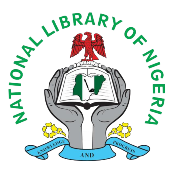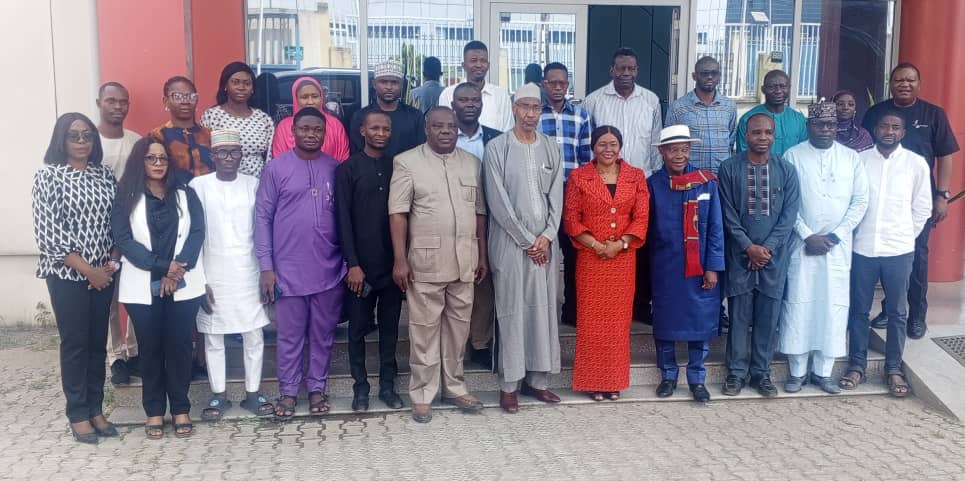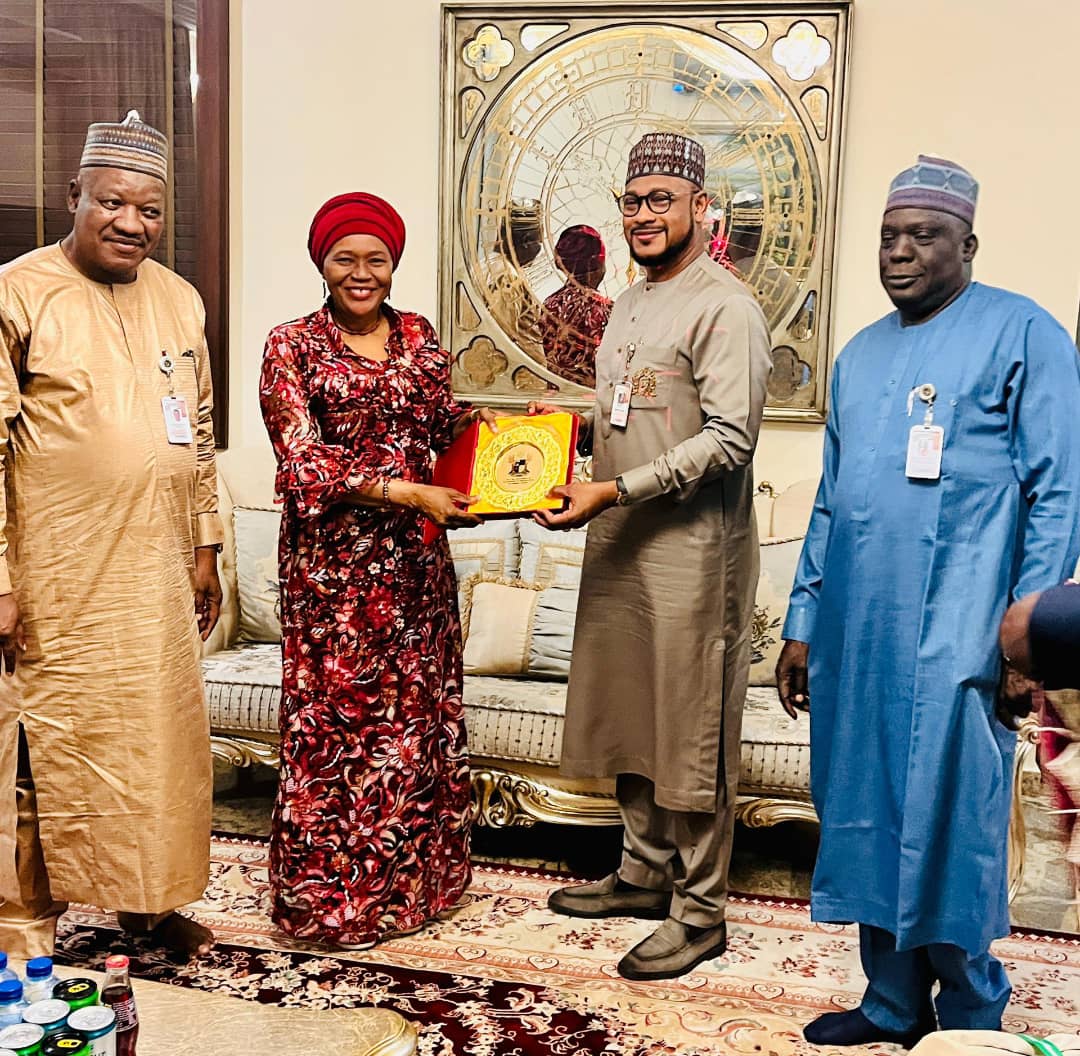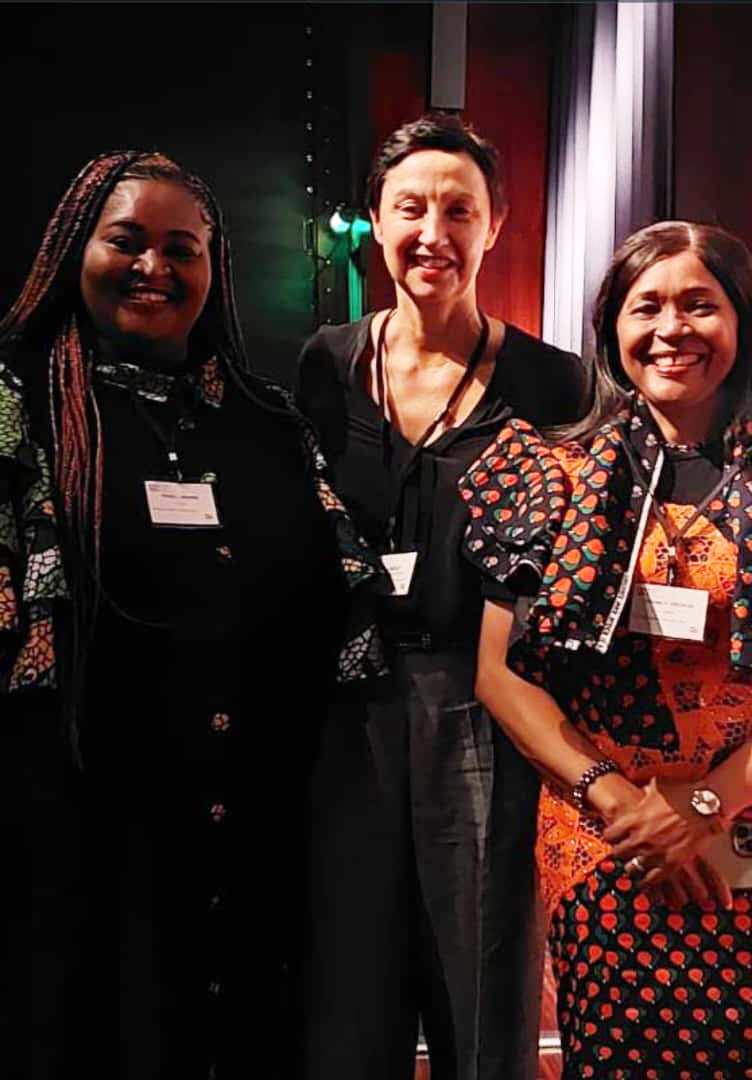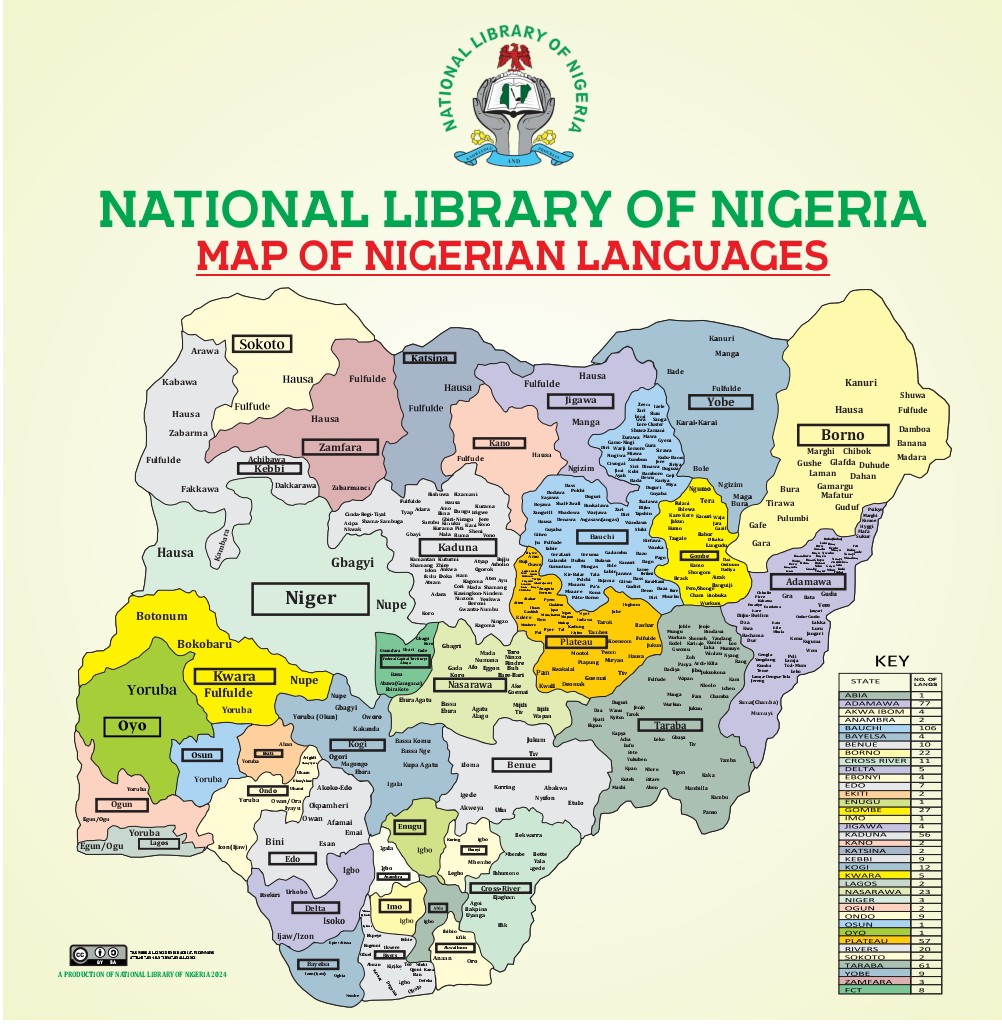The National Librarian and Chief Executive Officer of the National Library of Nigeria, Prof. Chinwe Anunobi has officially presented the Map of Nigerian Languages to the Honorable Minister of Education.
Presenting the Map to the Honourable Minister of Education, Prof. Tahir Mamman SAN and his counterpart, the Honourable Minister of State for Education, Dr. Tanko Sununu at the Federal Ministry of Education Abuja, the National Librarian/ CEO informed the duo that
when she assumed duty, she enunciated a 8-point swivel upon which her administration would revolve. Amongst this was the documentation of family history, in indigenous languages. The aim was to revitalize a wider interest in our indigenous languages and preserve same as they are rapidly dying.
UNESCO states that an estimated 2 languages die every month, worldwide.
She further stated that the National Library started some activities to draw greater attention to the existential threat to our indigenous languages. These activities were;
- commemorating the International Mother Language Day in 2022,
- started the Family History in Indigenous Languages
- secured grant from UNESCO and trained 60 students, teachers, young adults and authors on documentation of their family history in indigenous language.
But to know and evaluate the progress we are making, we need to know, not just the exact number of languages we have in this country, but to know the locales where they are spoken to keep track, down the line. This is what necessitated our setting out to create the Nigerian Language Map.
The National Librarian said we started the project which is the development of the Nigerian Language Map in February 2024. The map reflects all the 36 states of the federation, as well as the Federal Capital Territory, and the languages spoken in each of these states. The languages are those of people considered indigenous to those states, not transitory languages by sojourners.
We have some languages that are spoken just in one state, while others are spoken in as many as 7 states.
In addition to the map, we are carrying out a research and compiling a compendium of letters and alphabets of these languages.
She concluded that the Map will particularly help the National Library’s drive to revitalize and preserve indigenous Nigerian languages by targeting each, as appropriate.
In their responses, the Honourable Minister of Education applauded the efforts of the NLN for the laudable project. He emphasized that the languages belong to the heart of what a person is and what a community stands for, it is a critical part of the culture. The Minister emphasized how important the project is to the Ministry and hoped that the compendium of Alphabets and Numerals of Nigerian Languages will be ready as quickly as possible to help the Ministry in its strive to adopt mother languages for instructions in schools and other public uses. He further stated that the mother tongue facilitates the transmission of knowledge and research. Similarly, the Honourable Minister of State equally applauded the project and suggested minor areas that needed to be fine tuned.
The Map of Nigerian Languages is an initiative of the National Library of Nigeria, born out of concern for the existential threat to our indigenous languages. The Map reflects all 36 states of the federation, as well as the FCT and the languages spoken in each of the states. The Map shows the locales where the languages are spoken. The Map is based on the languages of the people considered indigenous to those states and not transitory languages by sojourners. It is part of the local content creation of the National Library of Nigeria and a reference material that has a Creative Common license to be referred to by researchers worldwide.
